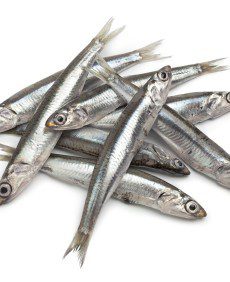By Dr. Regehr (reprint 12/13)
Wow, “Fish Oil Facts” just drew you right in, didn’t it? Welcome to Tales and Tails this first snowy winter morning. Fish Oil for dogs and cats is one of our favorite supplements. Recently Dr. Ferrell and I spent a Sunday at an all day special dermatology seminar. One-fourth of the day was spent discussing Omega 3 and Omega 6 fatty acids, how they are digested (physiology and bioavailability) and how they work in the body. Did you know that there are over 11,000 studies on various fatty acids uses in human and veterinary medicine? These aren’t internet studies, but real, scientific studies with control groups and scientific review processes. 11,000 studies and we are still learning about this “supplement.”
First, I am going to bore you with a tiny science lesson. We all hear about our healthy Omegas. There are Omega 6 fatty acids and Omega 3 fatty acids. These are the “healthy” triglycerides. The Omega 6s are all plant sources and oils (sunflower oil, safflower oil, avocado, soy, corn oil, nut oils). The main Omega 3s come from the “F” sources: fish oil (marine lipids) and flax. I am going to simplify this!
OMEGA 6 = Plant oils – liquid at room temperature OMEGA 3 = Fish Oils, Flax seed, Flax oil
The Omega 3s break down into two essential acids called DHA and EPA. Does this sound like a baby formula commercial yet? DHA and EPA are essential for neurologic development. They are also needed to maintain a healthy skin barrier, maintain healthy cartilage and decrease inflammation in joints, and support normal heart and kidney function. Isn’t that amazing?
Now here is the crux of the science lesson and the main points we need to consider when using these products:
- With all that research and all the propaganda we hear, there is no reliable recommended ratio of one to the other
- Although we need a minimum of Omega 6s, too many can increase inflammation especially when chronic inflammation exist
- Plant based Omega 3s (ex: flax) don’t convert well to the useful DHA and EPA in mammals (our pets and ourselves)
- These aren’t considered “essential nutrients” even though metabolically they are absolutely needed
Fish oil can improve skin barrier function and decrease itching!
How do you as a pet owner use those four statements? It means that our pets need Omega 3s supplemented as Fish Oils in their diet. All animal diets are already rich in Omega 6 which we don’t need to add anyway. Supplementing Omega 3s can suppress or override the excess uptake of the unnecessary (not bad, but not needed) Omega 6s. Remember, we need to focus on the fish oils over flax because mammals can’t convert that flax into what we need for healthy skin barriers, cartilage, the nervous system and the kidneys.
Guess what else is new and valuable information? We have doses for you! In the past fish oil dosing has been random at best and focused on total milligrams per gelcap. We now know that we need to be focusing on the actual amounts of DHA and EPA along with the source. Most fish oils labeled for pets and people drastically under dose or under recommend needed amounts.
I know we just did all the “science stuff” and I told you we need to use fish based oils (marine lipids), but now which fish? Well, Mercury is a big concern with consumption of wild caught fish. Therefore, people started seeking out fish oils from farm raised fish. Guess what? Farm raised have higher levels of PCB’s, more parasites, and diets heavy in Omega 6s. This decreases the overall amount and quality of their Omega 3s.
What hat are we to do? We look for fish oils made from small, easily renewable high fat fish like sardines, anchovies and other non-predatory fish. These fish are small, have wild diets and are non-predatory which all reduce mercury levels. I recently tried a new brand of fish oil for myself from what is touted as a high quality supplement company. Luckily, their advertising was spot on. My oils are from wild caught small fish marine lipids with EPA and DHA amounts on the bottle.
Anchovies and Sardines are low mercury sources of oils
Does that help you decided what to do for your pet? It probably does not. We came back from this seminar and pulled our fish oil product from the shelf. It met all the current parameters for quality. We calculated the DHA and EPA doses next. We need to be increase slightly the label recommendation for skin, nervous system and heart health. I already increased Molly’s (the best dog in the world) dose. For joint health, we should DOUBLE the regularly supplemented dose. For dogs on Hill’s Prescription J/D joint health diet, don’t worry their EPA and DHA amounts are exact. No additional supplementation is needed.
Well, I am a math nerd, and I’ve spent hours creating spreadsheets and calculating EPA and DHA at recommended doses for each body system (joints, heart, skin, kidneys, etc.). I even calculated the Hill’s J/D food! We have touted the effects of fish oil for years and we are very excited that we can now give you very precise doses and product recommendations. Please feel free to revisit fish oil discussions in your next appointment of give us a call.
We are so thankful that you entrust us with your pet’s care. We truly value each and every opportunity to continue our education so that we can share that with you for the benefit of your pet!




Leave a Reply
You must be logged in to post a comment.